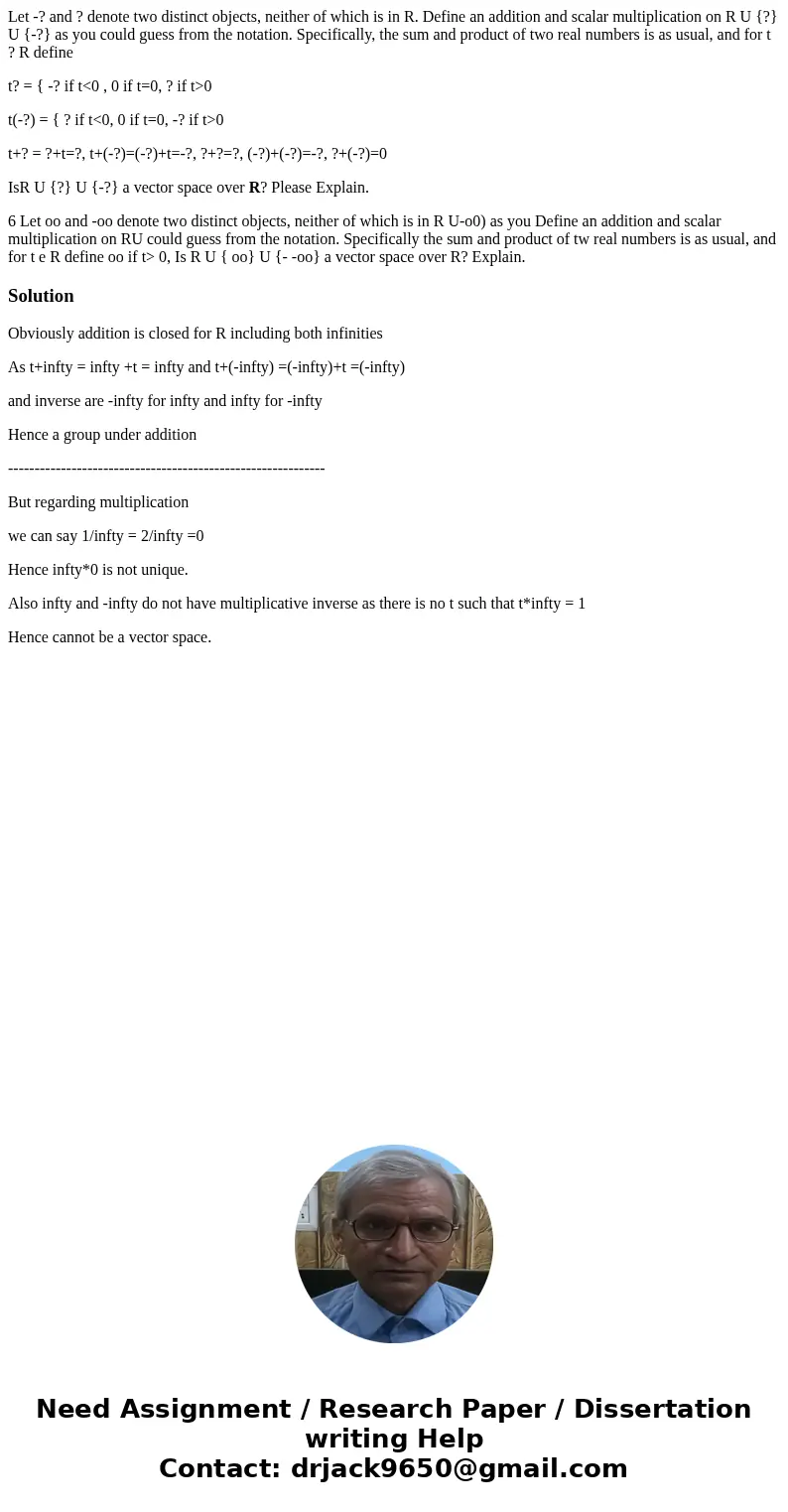Let and denote two distinct objects neither of which is in
Let -? and ? denote two distinct objects, neither of which is in R. Define an addition and scalar multiplication on R U {?} U {-?} as you could guess from the notation. Specifically, the sum and product of two real numbers is as usual, and for t ? R define
t? = { -? if t<0 , 0 if t=0, ? if t>0
t(-?) = { ? if t<0, 0 if t=0, -? if t>0
t+? = ?+t=?, t+(-?)=(-?)+t=-?, ?+?=?, (-?)+(-?)=-?, ?+(-?)=0
IsR U {?} U {-?} a vector space over R? Please Explain.
6 Let oo and -oo denote two distinct objects, neither of which is in R U-o0) as you Define an addition and scalar multiplication on RU could guess from the notation. Specifically the sum and product of tw real numbers is as usual, and for t e R define oo if t> 0, Is R U { oo} U {- -oo} a vector space over R? Explain.Solution
Obviously addition is closed for R including both infinities
As t+infty = infty +t = infty and t+(-infty) =(-infty)+t =(-infty)
and inverse are -infty for infty and infty for -infty
Hence a group under addition
------------------------------------------------------------
But regarding multiplication
we can say 1/infty = 2/infty =0
Hence infty*0 is not unique.
Also infty and -infty do not have multiplicative inverse as there is no t such that t*infty = 1
Hence cannot be a vector space.

 Homework Sourse
Homework Sourse